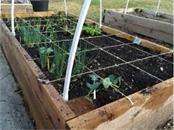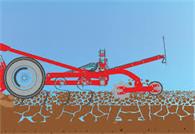Text A Seedbed preparation
Good stands start with good seed. However, even the best seed will not produce optimum yields unless other factors are favourable. A good seedbed that supplies the proper environment for germination is of the greatest importance in ensuring an optimum stand of the crops to be grown. Such seedbed is to insure adequate moisture for germination at the due seeding depth. The soil particles must be in contact with the seed they surround to allow a maximum water absorption for rapid germination.

Before planting, a grower has to perform cultivation practices that insure the proper environment for germination and at the same time preserve soil structure and minimize water loss due to evaporation from the soil surface. If the soil were too finely pulverized, crusting would occur. To maintain good structure the soil should not be cultivated when it is wet.
The first tillage operation following the preceding harvest is to destroy crop residues and to incorporate them into the soil to be used for seeding]In some regions this is done in the fall, while in areas with short growing season this operation is delayed until early spring. Early cultivation allows more time for organic matter to decompose.
Final seedbed preparation is completed in spring or late summer for crops to be sown in the fall. The first step is to cultivate with discs or harrows, or both. The surface soil is to be worked finely enough to minimize evaporation and to insure fine and mellow seedbed. It has to be cultivated deeply enough to kill early growing weeds. After cultivation, fields arc sometimes rolled to insure a firm seedbed. This is quite common in preparing the seedbed for most forage grasses. For crops that require irrigation, beds should be formed before rolling. To conserve moisture, final seedbed preparation should be followed by immediate planting.
However, even the best seedbed will not insure a good stand unless there is enough oxygen and proper temperature for seed germination.

Comprehension Focus
5. Translate the following sentences. Mind the difference when translating attributes expressed by participle constructions and the infinitives.








